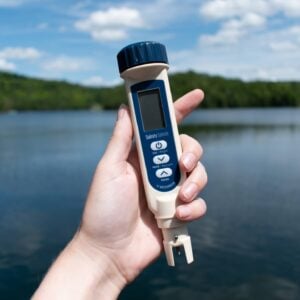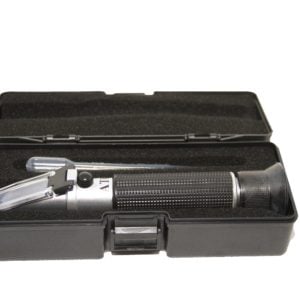Salinity in saltwater
What is salinity?
Salinity in saltwater is a measurement of salts dissolved in water that come from rocks and soil. The average salinity of the ocean is 35 ppt (parts per thousand). But, things like melting ice and rivers dilute salty water, so many coastal areas have lower readings. Our oceans vary in salinity too: Near the shores, rivers dilute the ocean to reduce salinity. In the arctic, melting icecaps also affect salinity.

Why is salinity important for saltwater ecosystems?
There are two factors that affect ocean water density. The most important one is temperature, and the second most important is salinity. Density affects currents and much more.
What does a salinity measurement mean?
We can see how much freshwater is mixing with sea water to determine the types of values and wildlife we should expect there. For example, in the arctic in summer, salinity can be lower than 20ppt, but in the Mediterranean Sea, values over 40ppt are common.
Salinity versus conductivity
We measure the salt content (salinity) or how much electric current passes through water (conductivity). Both are great measurements. The Ocean Explorer Testkit measures salinity, while the Freshwater Explorer Testkit and the Compact Freshwater Explorer measure conductivity! Average conductivity reading for ocean water is about 55,000 µS or 55mS, while salinity averages 35 ppt. For more details on conductivity, go to waterrangers.ca/conductivity
Water Rangers Protocol
Water Rangers has a salinity meter and a refractometer as our two methods for determining salinity.
Testing salinity with a refractometer
Our products that test for salinity:
-
Product on saleSalinity meterOriginal price was: $60.00.$55.00Current price is: $55.00.
-
Salinity refractometer$42.00

